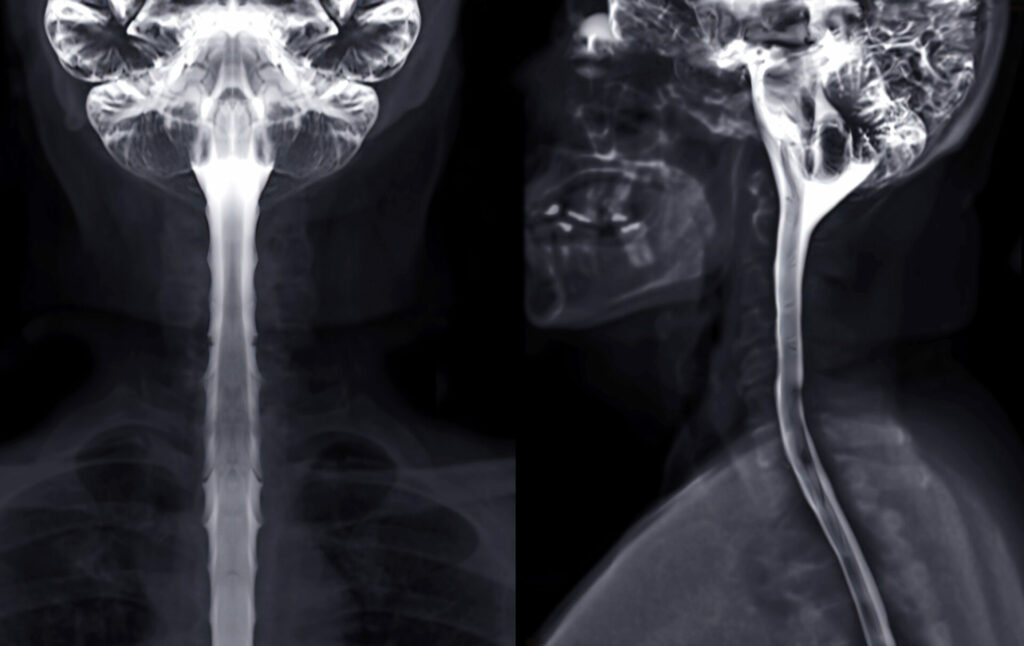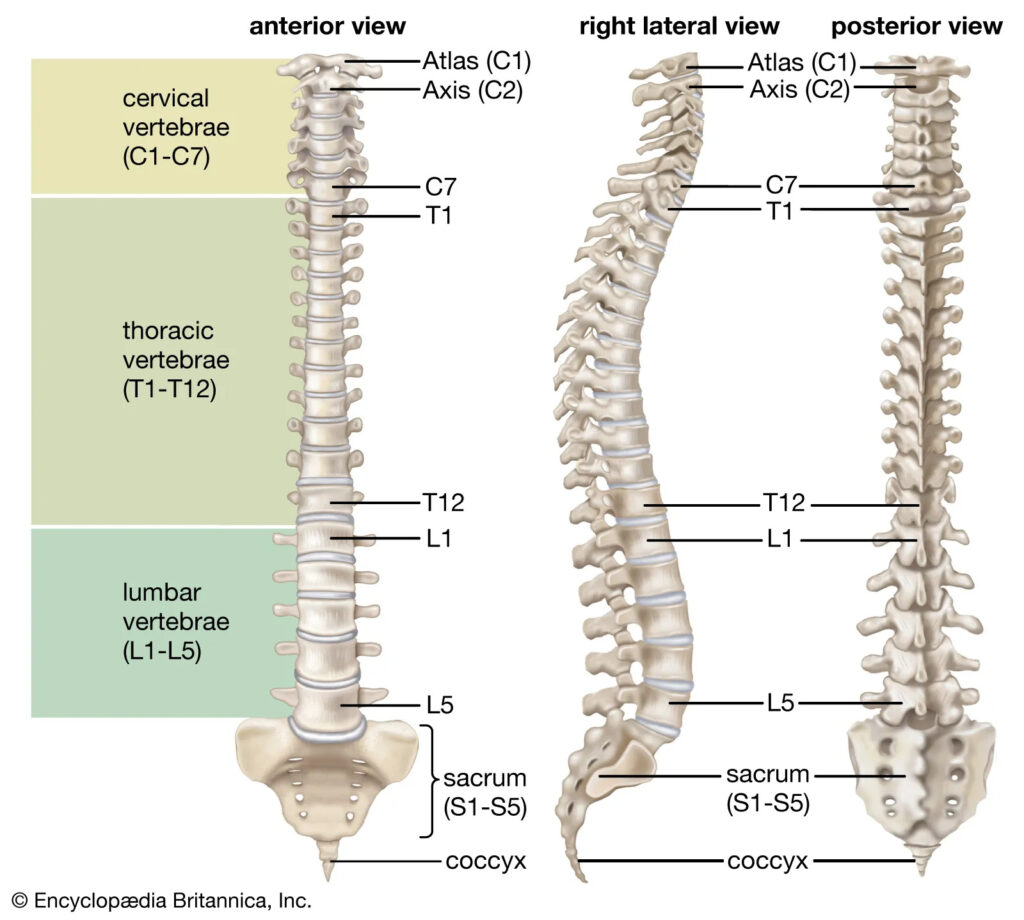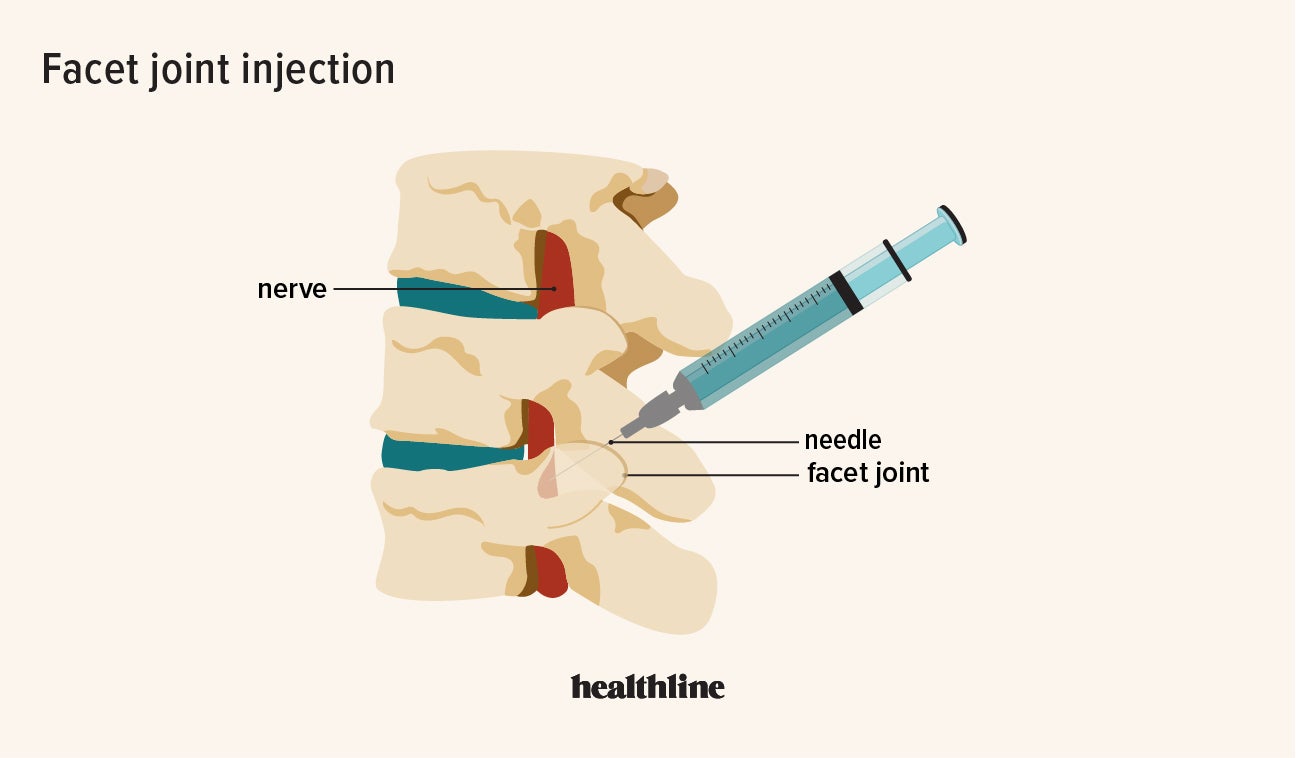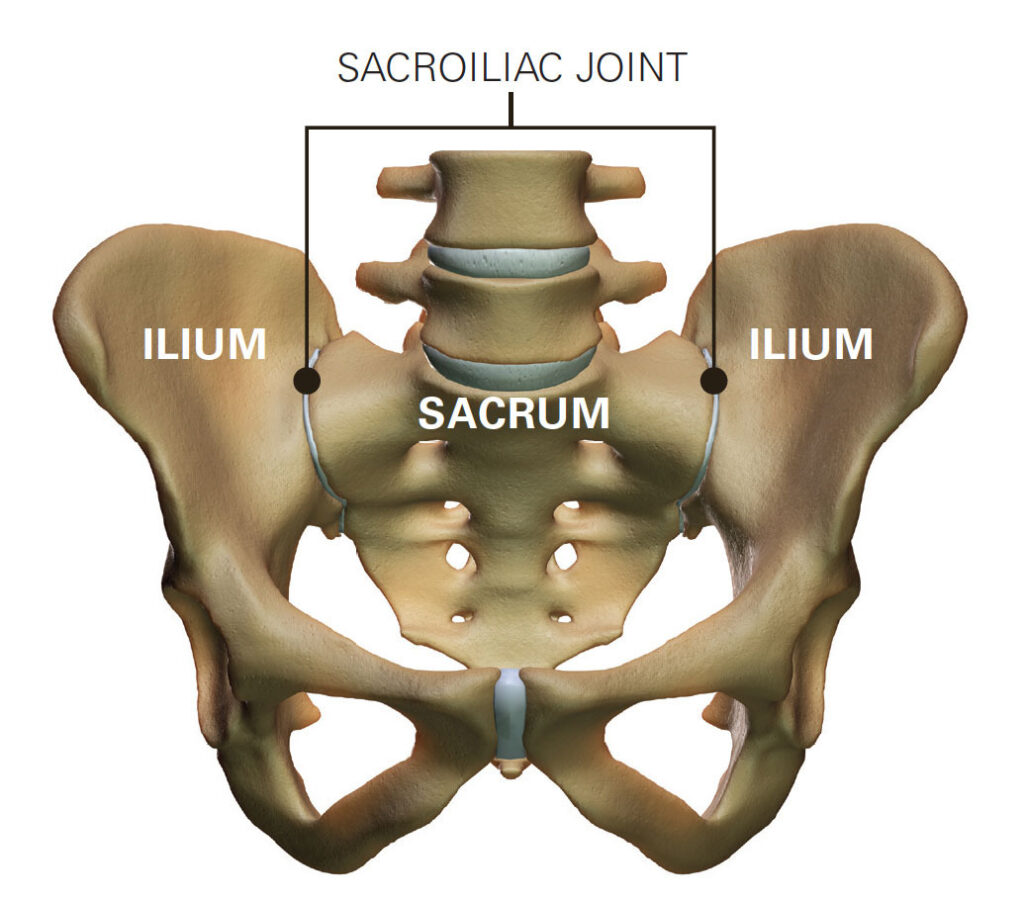Chronic back pain can significantly impact your quality of life. Whether it’s stopping you from playing with your kids or doing your favourite sport due to upper back pain when breathing or moving, or just getting on with daily life, it’s essential to know how to tackle back pain.
Injections for back pain offer lots of benefits to patients with chronic back and spine conditions. From diagnostics to pain relief, injections can help you move past your back pain. That’s why we offer steroid injections and other interventions to private healthcare patients with chronic or severe sudden back pain.
But with so many different options available, it’s not always easy to know where to start.
In this comprehensive guide to the different types of injections for back pain, you’ll learn more about what each injection offers, any side effects to consider, and how much injections for back pain cost.
Why are back pain injections useful?
Back pain injections are often used for one or more of the following reasons:
- Diagnosis — Injecting contrast dyes can give doctors a better picture of your spine and any possible medical conditions.
- Pain relief — Pain relief is the most common reason for back pain injections. Anaesthetic and steroid shots can offer short- and long-term pain relief.
- Joint stabilisation — Some injections can repair bone fractures to stabilise the spinal joints.
- Surgical anaesthetic — If surgery or a more invasive procedure is needed, anaesthetic can be administered via a spinal injection.
15 types of back pain injections
Find out more about each of the different types of injections for back pain in the list below.
1. Myelogram
Purpose: Diagnosis

A myelogram is used to identify and diagnose problems in the spinal canal. As part of this diagnostic imaging test, a contrast dye is injected into the spinal column to allow your doctor to see the structures of your spine more clearly.
This test also involves a CT scan, MRI scan, or X-ray to see the spine and surrounding tissue, so your doctor can make a more accurate assessment of your back pain.
Myelogram side effects
- Leak of cerebrospinal fluid, which may result in a headache.
- Dehydration.
- Soreness, bruising and bleeding at the injection site.
- Short-term numbness in the legs or lower back
2. Discogram
Purpose: Diagnosis
Like a myelogram, a discogram is an imaging test used to detect and evaluate back pain, especially if your doctor suspects you have a herniated disc.
In a discogram, a contrast dye is injected into your spinal discs (the soft tissue that cushions each of the bones in your spine). Again, the dye helps your doctor make a more accurate diagnosis via a scan. In some cases, a discogram is used to provoke back pain so your doctor can identify the specific disc(s) causing your symptoms.
Discograms are somewhat controversial, as they can sometimes cause or worsen low back pain [1].
Discogram side effects
- Discitis (infection of the disc).
- Leak of cerebrospinal fluid, which may result in a headache.
- Worsening back pain.
- Soreness, bruising, and bleeding at the injection site.
3. Epidural
Purpose: Pain relief
An epidural is one of the best-known spinal injections for back pain. Under local anaesthetic, a needle injects medicines such as steroids or anaesthetics into the epidural space to reduce swelling and pain around the back and limbs.
Epidural steroid injections are an effective treatment for sciatica, herniated discs, arthritis, and other back pain problems.
An epidural injection can be delivered to one of four areas of the spine:
- Cervical — The uppermost part of the spine.
- Thoracic — The majority of the spine is thoracic, spanning the upper-mid and mid back.
- Lumbar — The lower part of the spine. Learn more about lumbar epidural steroid injections.
- Caudal — The area around the sacrum and coccyx.

Find out more about the difference between a spinal block vs epidural and how long epidural injections for back pain last.
Epidural side effects
The side effects you experience will depend on the medication you’re given. This is the case for each type of back pain injection, no matter where or how it’s administered. So check the possible adverse effects with your practitioner before your procedure.
Reported side effects from an epidural for back pain include:
- A flushed, warm face.
- Menstrual changes.
- Water retention.
- Leak of cerebrospinal fluid, which may result in a headache.
- Soreness, bruising, and bleeding at the injection site.
Epidural steroid injections carry certain risks; find out more about the dark side of epidural steroid injections.
4. Facet joint injection
Purpose: Pain relief
Your facet joints connect the bones of your spinal column, giving them the stability and flexibility to move and rotate. A facet joint injection offers pain relief if the facet joints are irritated or inflamed. This is sometimes the cause of low back pain in runners.

Like an epidural, a facet joint injection administers corticosteroids and/or anaesthetic to reduce pain and swelling [2]. It can be given in the cervical, thoracic, or lumbar region of the spine.
Facet joint injections will only work if the facet joints are the source of pain, so it’s important to determine if this is the case beforehand.
Facet joint injection side effects
- Soreness, bruising and bleeding at the injection site.
- Local swelling and bruising.
- Lower back pain (which tends to be short-lived and self-limiting).
- Menstrual changes.
- Water retention.
5. Medial branch block
Purpose: Diagnosis, pain relief
A medial branch block injection offers similar benefits to a facet joint injection, though they work in slightly different ways. One study found no significant differences in the back pain relief offered by medial branch block or facet joint injection [3].
Medial branch nerves carry pain signals from the facet joints to the brain. By blocking sensation of these nerves with a local anaesthetic, medial branch block injections can determine if your pain stems from facet joint injury.
Medial branch block side effects
- Numbness or weakness in your back, neck, or legs.
- Soreness, bruising and bleeding at the injection site.
- Nerve injury.
- Leak of cerebrospinal fluid, which may result in a headache.
6. Facet joint rhizotomy
Purpose: Pain relief
A facet joint rhizotomy may be used alongside a medial branch block to permanently destroy the nerves that carry pain signals to the brain.
Using radiofrequency waves or chemicals, a rhizotomy deadens the nerve tissue so it can no longer register facet joint pain, offering back pain relief for up to a year. Eventually the nerves will grow back. If the pain returns, you can have further rhizotomy procedures.
Facet joint rhizotomy side effects
- Soreness, bruising and bleeding at the injection site.
- Leak of cerebrospinal fluid, which may result in a headache.
- Nerve centre damage can cause additional pain points.
- Numbness in the affected area (more likely with radiofrequency rhizotomy).
7. Selective nerve root block
Purpose: Diagnosis, pain relief
Selective nerve root block is a procedure in which steroids are injected near the target nerve as it exits the spine. It can be used anywhere from the thoracic to the caudal region, and is used for back pain diagnosis and therapy.
Selective nerve root block has been shown to reduce the need for surgery in up to 54% of patients [4]. It can offer up to six months of pain relief after just a single treatment. It may be used to treat symptoms of sciatica, lumbar disc herniation, and certain types of spinal stenosis.
Nerve root block side effects
- Flushed, warm face.
- Soreness, bruising, and bleeding at the injection site.
- Weakness around the affected nerve.
- Accidental penetration of the disc or facet joint.
8. Neurolytic root block
Purpose: Pain relief

Neurolytic root blocks work in a different way to many other back pain injections. While others administer steroids and/or anaesthetic to numb the area and reduce swelling, a neurolytic root block is designed to damage the nerve endings so they stop sending pain signals to the brain [5].
The target nerve is identified via ultrasound or another type of diagnostic nerve block. A nerve agent (such as alcohol) is then applied to the nerve to break down and desensitise the nerve fibres. This is known as neurolysis.
Neurolytic root block side effects
- Soreness, bruising and bleeding at the injection site.
- Accidental tissue damage may lead to hair loss or skin colour changes.
- Neuritis (inflammation/injury to secondary nerves).
- In rare cases, accidental neurolysis of motor nerves may result in motor paralysis.
9. Sympathetic nerve blocks
Purpose: Pain relief
Sympathetic nerve blocks are used to treat pain stemming from spinal nerves that you feel elsewhere in the body. For example, the sympathetic nerves in your lower back can cause pain in the lower legs, ankles, and feet.
Like certain other nerve block injections for back pain, sympathetic nerve blocks work by stopping pain signals being sent from the nerves to the brain. This is usually via a local anaesthetic and/or corticosteroids.
Sympathetic nerve block side effects
- Low blood pressure.
- Rapid heart rate.
- Diarrhoea.
- Nerve and/or blood vessel damage.
- Soreness, bleeding, and bruising at the injection site
10. Paravertebral block
Purpose: Surgical anaesthetic
A paravertebral block is used to administer pain relief during or after an operation. It’s a relatively straightforward technique that’s associated with fewer complications than other procedures, so it’s often favoured by back pain specialists [6].
Studies have found the pain relieving effect of paravertebral blocks to be similar to epidural injections [7]. Paravertebral blocks can be performed at multiple levels, usually starting in the thoracic spine.
Paravertebral root block side effects
- Low blood pressure.
- Soreness, bruising and bleeding at the injection site.
- Accidental vein puncture.
- Leak of cerebrospinal fluid, which may result in a headache.
- Lung collapse (in very rare cases).
11. Sacroiliac joint injection
Purpose: Diagnosis, pain relief
The sacroiliac joints link your pelvis to your lower spine. There are two joints: one either side of the sacrum:

If there’s a chance your pain stems from the sacroiliac joints, sacroiliac joint injections can diagnose and treat your condition. Sacroiliac joint injections are one of many treatments for sacroiliac pain available on the NHS.
These injections can provoke pain or administer anaesthetic to determine if this is the cause, and give steroid injections to alleviate any inflammation around the joints [8].
Sacroiliac joint injection side effects
- Soreness, bleeding, and bruising at the injection site.
- Worsening back pain.
- A flushed, warm face.
- Sweating.
12. Radiofrequency ablation
Purpose: Pain relief

Radiofrequency ablation is a similar procedure to a facet joint rhizotomy, and may be considered a type of neurolysis. But radiofrequency ablation can be applied to other nerves besides the medial nerves, and it only uses radiofrequency waves to destroy nerve tissue.
Radiofrequency ablation for back pain involves inserting a needle-like probe into the affected area of the spine. It may be used to treat cervical and lumbar pain, as well as sacroiliac joint disease [9].
Radiofrequency ablation side effects
- Accidental damage to nerves besides the target nerve(s).
- Soreness, bleeding, and bruising at the injection site.
- Accidental tissue damage may lead to hair loss or skin colour changes.

13. Platelet-rich plasma (PRP) therapy
Purpose: Pain relief
Platelet-rich plasma therapy involves taking a blood sample from you, separating it into individual components, then reinjecting the platelets to promote tissue repair and healing in your back and spine [10].
PRP is a relatively low-risk type of injection for back pain. It’s safe and effective, especially compared with local anaesthetic and steroid injections for low back pain [10]. PRP injections into the spinal discs can also alleviate pain and prevent muscle degeneration.
PRP therapy side effects
- Lightheadedness and fainting.
- Soreness, bleeding, and bruising at the injection site.
- Nerve or tissue damage (in rare cases).
14. Stem cell therapy
Purpose: Pain relief
Stem cell therapy is a relatively new approach to tackling low back pain with promising early results for patients in the early stages of disc degeneration [11]. According to one study, 69% of patients treated with stem cell injections reported more than a 50% reduction in back pain one year after the procedure [11]. By comparison, just 33% of the control group said the same.
However, it’s not suitable for everyone — patients with a herniated disc are less likely to benefit from stem cell therapy.
There are several different stem cell injections that can treat back pain, but the technology is still in its infancy, so it will be a while before stem cell therapy for back pain becomes widespread. Mostly, this therapy works by harvesting your stem cells, culturing them with growth factors and reinjecting them to promote healing in and around your spine.
Stem cell therapy side effects
- Nausea and vomiting.
- Soreness, bleeding, and bruising at the injection site.
- Hormonal changes
- Joint swelling.
- Reduced range of motion at the affected joint.
15. Vertebroplasty
Purpose: Joint stabilisation
If your back pain is caused by a fractured bone, vertebroplasty can help. In this procedure, bone cement is injected into the fractured bone, providing stability and structure [12].
Although it’s a relatively high-risk procedure, studies have shown that vertebroplasty can offer significant pain relief to patients with specific types of back pain [12]. It can reduce dependence on painkillers, boost mobility, and improve your quality of life.
Vertebroplasty side effects
- Soreness, bleeding, and bruising at the injection site.
- Spinal stenosis.
- Trapped nerve in the spine.
- Cement leakage (although the majority of cases don’t have symptoms [12]).
- Damage to the kidneys, nerve roots, or spinal cord.
What is the most common injection for back pain?
Epidural steroid injections are among the most common injections for back pain [13]. Having been used to treat patients with herniated discs and trapped nerves for more than 60 years, it’s a well-established injection technique for back pain [14].
Which injection is best for back pain?
There’s no one-size-fits-all solution when it comes to back pain injections. Choosing the right injection will depend on your:
- Diagnosis — Different injections are suitable for different types of back pain.
- Medical history — Some health conditions or medications can preclude you from having certain injections.
- Symptoms — Some injections will treat the symptoms of back pain, while others can address the underlying cause.
- Risk assessment — The possible side effects associated with each type of injection should be carefully considered by you and your medical team.
How much do back pain injections cost?
You may be able to get certain back pain injections for free on the NHS. However, this process is often lengthy, as NHS cortisone injections and other back pain relief jabs aren’t usually a first- or even second-line treatment.
Many patients turn to private medical care for their back pain injections. Private health insurers may cover the majority of your injection costs. For self-pay patients, see our pain management prices including back pain injection costs. Prices start at £2,001 for an epidural injection, rising to £3,725 for a neurolytic block.
Book an appointment at Harley Street Specialist Hospital to learn more about which types of back pain injections are best suited to you.
Diagnosis, assessment, and treatment at Harley Street Specialist Hospital
Harley Street Specialist Hospital specialises in provides accurate diagnoses and individual treatment plans for each of our back pain patients. Working with the most extensive pool of pain management consultants in the UK, Wwe can often assess, diagnose, and provide suitable back pain injections in the same day, giving you almost immediate relief from your symptoms.
Book an appointment to discuss your back pain with our specialist team.




